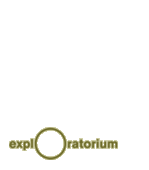|

|

|
|||||||||||||
|

|
 Transgenics
Transgenics
What do a tomato and a bacterium have in common? They both rely on the DNA molecule
to direct their functions and characteristics. While each species has its own
unique combination of DNA, called its
genome
, the molecule works by
the same rules in all living organisms. What does this mean for a high-tech plant
breeder? That useful genes from one organism can potentially be transferred to
the genome of another.
|
||

|
Scientists have done this with the bacterium Bacillus thuringiensis , or Bt for short. Bt, which is found naturally in soil and on the leaves of many plants, is toxic to many plant pests. The genes that give it that toxicity were first put into potatoes in 1997. Now many vegetables grown commercially have the Bt genes in them. This gene-adding process is called “genetic engineering” (GE). GE is one form of what’s called “genetic modification” (GM). Though GE and GM are related, they are not the same. “Genetically modified” refers to any plant (or other organism) whose DNA has been manipulated by humans. This could happen through artificial selection and hybridization or through engineering. “Genetically engineered” refers specifically to one or more extra genes that have been inserted into a plant’s genome from an organism it can’t mingle genes with via sexual reproduction. The products of such engineering feats— like Bt tomatoes—are called “transgenic.” Intuitively, GE doesn’t seem like a very “natural” process. After all, genes in nature don’t cross so many boundaries. But the line between natural and unnatural may be grayer than you think. In the wild, most plants (actually, most living things) share genes only with members of their own or very closely related species living in nearby environments. Hybridization allows plant breeders to go beyond these limitations that exist in nature. Suppose a wild tomato exists that seems particularly resistant to cold. A breeder can cross this plant with one that produces store-bought tomatoes in order to impart these useful ancestral genes. The resulting tomatoes may look and taste like the ones we’re familiar with, and their DNA doesn’t contain any “nontomato” genes. But this cross isn’t natural: these two plants would never have found each other in the wild. In fact, the grocer’s tomato doesn’t even exist in nature. It’s the product of hundreds of similar hybridizations. The main difference between a hybridized tomato and a transgenic one is that the latter has additional bits of DNA that originally came from another species. It has an altered genome. Critics of genetic engineering have argued that this process may have unintended consequences: They are concerned that seeds from GE plants could carry their genetic alterations into the environment and the food supply, or that untested GE products may pose health risks for consumers. Supporters of genetic engineering counter that the benefits of GE—plants with added nutrition, higher yields, or the ability to produce pesticides or drugs—outweigh the risks, and that a world with rapidly increasing population can’t be fed without them. Different countries have adopted different policies toward the growing, selling, and labeling of genetically engineered foods. For example, GE ingredients in packaged foods have to be identified as such in Europe, but not in the United States. Until March 2005, farmers in Brazil were not allowed to grow GE crops, while farmers in the United States have long been encouraged to do so. In addition, the companies that develop genetically-engineered crop plants claim ownership of the seeds and any plants they produce as offspring for several generations. This has met with resistance from farmers around the world, some of whom have had pollen from GE plants blown or carried into their fields, and others in developing countries who would like the benefits of genetic engineering without being dependent on seed producers for their seed supply. As a backyard gardener, you’re not likely to be planting any transgenics. These engineered plants have been developed for agriculture. They are patented, and the companies that sell them would make you aware of that when you buy them. That doesn’t mean, however, that the plants you grow in your garden are the products of completely natural processes. There’s manipulations everywhere out there. Links presenting various views on transgenics, from the Action Bioscience Web site, produced by the American Institutes of Biological Sciences:
Biotechnology and the Green Revolution: An Interview with
Norman Borlaugh
The Ecological Impacts of Agricultural Biotechnology
By Kerryn Sakko http://www.actionbioscience.org/biotech/sakko.html This article describes some of the differences between breeding and genetically engineering crops, and presents arguments on both sides of the issue. Written by an undergraduate student from Australia who represented her country at the 2004 Youth Science Festival in Singapore, sponsored by Asia-Pacific Economic Cooperation Forum. Other Web site resources:
Food Future
http://www.colostate.edu/programs/lifesciences/transgeniccrops/how.html Through animations, illustrations, and text, this page gives background on DNA and describes how scientists move genes from one organism to another.
|
||
|
|
|
|
|
|
|
|
|
| © Exploratorium |